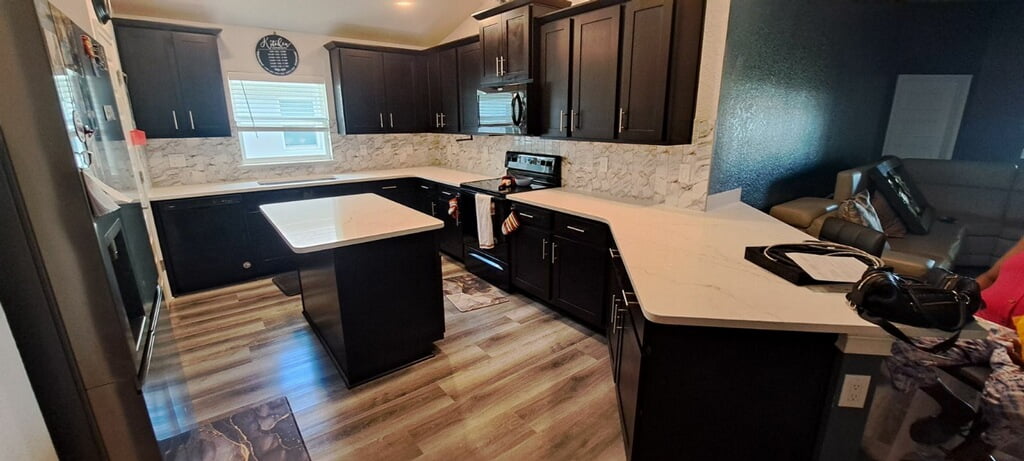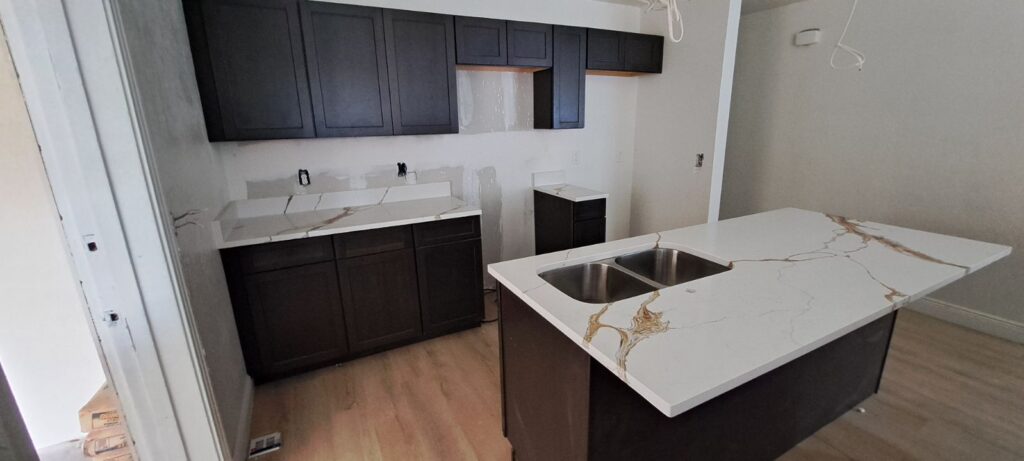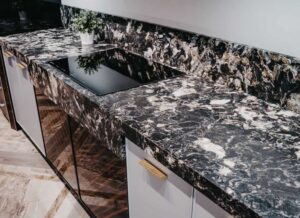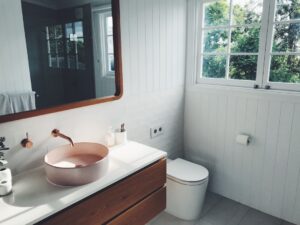The functionality of kitchen and bathroom countertops is crucial to consider when choosing the right material for these spaces. In the kitchen, countertops are used for food preparation, cooking, and often serve as a dining area. Therefore, it is important to select a material that is durable, heat-resistant, and easy to clean.
In the bathroom, countertops are primarily used for personal grooming and hygiene activities, so the material should be water-resistant, easy to maintain, and resistant to stains and chemicals. Understanding the specific functions of these spaces will help in making an informed decision when selecting the right countertop material. In addition to functionality, it is important to consider the layout and design of the kitchen and bathroom when choosing countertops.
The size and shape of the space, as well as the placement of appliances and fixtures, will impact the choice of material and the overall design. For example, in a small kitchen with limited counter space, a lighter colored countertop can help create a sense of openness and brightness. In a larger bathroom with ample natural light, a darker colored countertop can add a touch of elegance and sophistication.
By understanding the functionality and layout of the space, homeowners can make informed decisions when selecting kitchen and bathroom countertops.
Key Takeaways
- Kitchen and bathroom countertops serve as functional workspaces for cooking and grooming.
- Granite and quartz countertops in Florida offer a wide range of aesthetic options for different design schemes.
- Proper lighting is essential for showcasing the beauty of stone countertops and enhancing the functionality of the space.
- Matching the stone color with the overall design scheme is crucial for creating a cohesive and harmonious look.
- Different stone textures offer varying levels of durability, which should be considered based on the specific needs of the space.
- Maintenance and cleaning requirements vary for different stone countertops and should be factored into the decision-making process.
- Seeking professional advice and samples can help in making informed decisions and ensuring the best choice for your space.
Considering the Aesthetics: Granite & Quartz Countertops in Florida
Natural Beauty and Luxury with Granite
Granite countertops offer a unique blend of natural beauty and timeless elegance, with one-of-a-kind patterns and colors formed by nature. Each slab of granite is distinct, adding a touch of luxury and exclusivity to any space.
Versatility and Practicality with Quartz
Quartz countertops, on the other hand, provide a wide range of colors and patterns that can mimic the look of natural stone or achieve a more contemporary aesthetic. With its non-porous surface, quartz is resistant to stains, scratches, and bacteria, making it a practical and low-maintenance option for kitchens and bathrooms in Florida.
Climate and Lifestyle Considerations
In addition to aesthetics, it’s essential to consider the climate and lifestyle in Florida when choosing between granite and quartz countertops. Florida’s high humidity and frequent sunshine can impact the durability and maintenance of countertops. Granite countertops are heat-resistant and can withstand the intense heat of Florida summers, while quartz countertops are non-porous and resistant to fading from UV exposure.
Making an Informed Decision
By considering the aesthetics and practicality of granite and quartz countertops in the context of Florida’s climate and lifestyle, homeowners can make informed decisions that enhance the beauty and functionality of their spaces.
Assessing the Lighting in the Space

Assessing the lighting in the kitchen and bathroom is essential when selecting countertops, as it can significantly impact the appearance and functionality of the space. Natural light can enhance the beauty of granite countertops by showcasing their unique patterns and colors, while artificial lighting can create a warm and inviting ambiance in both kitchens and bathrooms. In spaces with limited natural light, lighter colored countertops can help reflect light and create a sense of openness, while in spaces with ample natural light, darker colored countertops can add depth and contrast.
By assessing the lighting in the space, homeowners can choose countertops that complement the overall design and create a visually appealing environment. In addition to natural and artificial lighting, task lighting should also be considered when selecting kitchen countertops. Task lighting is essential for food preparation, cooking, and other activities in the kitchen, so it is important to choose a countertop material that does not create glare or reflection under task lighting.
For example, matte or honed finishes on granite or quartz countertops can reduce glare and provide a comfortable working environment in the kitchen. By assessing the lighting in the space and considering task lighting requirements, homeowners can select countertops that not only look beautiful but also function effectively in their kitchens and bathrooms.
Matching the Stone Color with the Overall Design Scheme
Matching the color of stone countertops with the overall design scheme of the kitchen and bathroom is crucial for creating a cohesive and harmonious space. In kitchens, countertops should complement the cabinetry, flooring, backsplash, and appliances to create a unified look. For example, in a modern kitchen with sleek white cabinetry and stainless steel appliances, a gray or black granite countertop can add contrast and sophistication.
In a traditional kitchen with warm wood cabinetry and earthy tones, a beige or brown quartz countertop can create a sense of warmth and comfort. Similarly, in bathrooms, countertops should coordinate with the vanity, flooring, wall tiles, and fixtures to create a balanced and inviting atmosphere. By matching the color of stone countertops with the overall design scheme, homeowners can achieve a cohesive look that reflects their personal style and enhances the beauty of their spaces.
Furthermore, considering the color psychology can also play a role in selecting stone countertops for kitchens and bathrooms. Warm colors such as beige, brown, and gold can create a cozy and inviting atmosphere in both kitchens and bathrooms. Cool colors such as gray, blue, and green can evoke a sense of calmness and tranquility in these spaces.
By understanding the impact of color on mood and perception, homeowners can choose stone countertops that not only complement the overall design scheme but also create a desired ambiance in their kitchens and bathrooms.
Evaluating the Durability of Different Stone Textures
Evaluating the durability of different stone textures is essential when selecting kitchen and bathroom countertops that can withstand daily use and maintain their beauty over time. Granite countertops are known for their natural strength and durability, making them resistant to scratches, heat, and stains. The unique patterns and textures of granite also help conceal minor imperfections that may occur with regular use.
On the other hand, quartz countertops are engineered to be extremely durable, with a non-porous surface that is resistant to scratches, stains, and bacteria. The uniformity of color and texture in quartz also makes it easier to maintain consistency in design throughout the space. In addition to durability, it is important to consider the texture of stone countertops in relation to their functionality in kitchens and bathrooms.
Polished granite countertops offer a smooth surface that is easy to clean and maintain, making them ideal for food preparation areas in kitchens. Honed or leathered finishes on granite provide a softer texture that can add warmth and character to both kitchens and bathrooms. Similarly, quartz countertops with a polished finish offer a sleek and elegant look that is easy to clean, while those with a honed or textured finish can add depth and visual interest to these spaces.
By evaluating the durability and texture of different stone countertops, homeowners can choose materials that not only look beautiful but also perform well in their kitchens and bathrooms.
Factoring in Maintenance and Cleaning Requirements

Maintenance Requirements for Granite Countertops
Granite countertops require regular sealing to protect against stains and bacteria, as well as routine cleaning with mild soap and water to preserve their natural beauty. While granite is relatively low-maintenance compared to other natural stone materials, it’s crucial for homeowners to follow proper care instructions to ensure its longevity.
Low-Maintenance Quartz Countertops
On the other hand, quartz countertops are virtually maintenance-free due to their non-porous surface that doesn’t require sealing or special cleaning products. Routine cleaning with mild soap and water is all that’s needed to keep quartz countertops looking like new for years to come.
Considering Specific Use and Maintenance Needs
Furthermore, considering the specific use of kitchen and bathroom countertops is vital when factoring in maintenance and cleaning requirements. In kitchens where food preparation takes place, it’s essential to choose a countertop material that’s resistant to stains from food and beverages. In bathrooms where personal grooming activities occur, it’s important to select a countertop material that’s resistant to water damage from spills or splashes. By factoring in maintenance and cleaning requirements based on the specific use of these spaces, homeowners can choose countertops that not only enhance the beauty of their kitchens and bathrooms but also provide practicality and ease of maintenance.
Seeking Professional Advice and Samples
Seeking professional advice from experienced designers or contractors can provide valuable insights when selecting kitchen and bathroom countertops that best suit individual needs and preferences. Design professionals can offer guidance on choosing materials that align with specific design goals, functional requirements, budget constraints, as well as provide recommendations for reputable suppliers or fabricators. Contractors can provide technical expertise on installation requirements for different countertop materials based on the layout and structure of the space.
Additionally, requesting samples of granite or quartz countertops allows homeowners to see firsthand how different colors, patterns, textures, and finishes will look in their kitchens or bathrooms. Moreover, visiting showrooms or design centers that specialize in stone countertops can provide an opportunity to explore a wide range of options available for kitchens and bathrooms. Showrooms often have full-size slabs or large samples on display that allow homeowners to visualize how different materials will look in their spaces.
Viewing actual samples under various lighting conditions can help homeowners make informed decisions about color selection based on their specific design scheme. By seeking professional advice from experts in the industry and requesting samples of granite or quartz countertops, homeowners can gain confidence in their choices while creating beautiful and functional spaces that reflect their personal style. In conclusion, understanding the functionality of kitchen and bathroom countertops is essential for making informed decisions about selecting materials that best suit individual needs.
Considering aesthetics such as granite or quartz countertops in Florida involves understanding how these materials complement the climate and lifestyle while enhancing the beauty of these spaces. Assessing lighting conditions helps homeowners choose materials that not only look beautiful but also function effectively in their kitchens or bathrooms. Matching stone colors with overall design schemes creates cohesive spaces that reflect personal style while creating harmonious environments.
Evaluating durability factors such as different stone textures ensures that selected materials perform well over time while adding visual interest to these spaces. Factoring maintenance requirements based on specific use helps homeowners choose materials that provide practicality while enhancing beauty in their kitchens or bathrooms. Seeking professional advice from experienced designers or contractors provides valuable insights while requesting samples allows homeowners to visualize how different materials will look in their spaces before making final decisions about selecting granite or quartz countertops for their kitchens or bathrooms.
If you’re considering installing new countertops in your home, it’s important to choose the right stone color and texture to complement your space. In addition to considering the aesthetic appeal, it’s also important to think about the practicality and durability of the stone. For a step-by-step guide to the countertop installation process, check out this article from Edstone Inc. A Step-By-Step Guide to the Edstone Inc. Countertop Installation Process. This will give you a better understanding of what to expect during your Orlando home renovation.
FAQs
What factors should I consider when choosing the right stone color and texture?
When choosing the right stone color and texture, consider the overall aesthetic of the space, the style of the architecture, the intended use of the stone, and the surrounding environment.
How does stone color affect the overall look of a space?
Stone color can significantly impact the overall look of a space. Lighter colors can create a sense of openness and airiness, while darker colors can add warmth and coziness.
What are some popular stone textures and their characteristics?
Popular stone textures include polished, honed, brushed, and natural cleft. Polished stones have a glossy, reflective surface, while honed stones have a smooth, matte finish. Brushed stones have a textured, weathered look, and natural cleft stones have a rough, uneven surface.
How can I ensure that the stone color and texture I choose will complement the rest of the space?
To ensure that the stone color and texture complement the rest of the space, consider obtaining samples and placing them in the intended area to see how they interact with the surrounding elements such as furniture, wall color, and lighting.
What are some tips for maintaining the color and texture of stone surfaces?
To maintain the color and texture of stone surfaces, it is important to regularly clean and seal the stone, avoid using harsh chemicals or abrasive cleaners, and promptly clean up any spills or stains.





